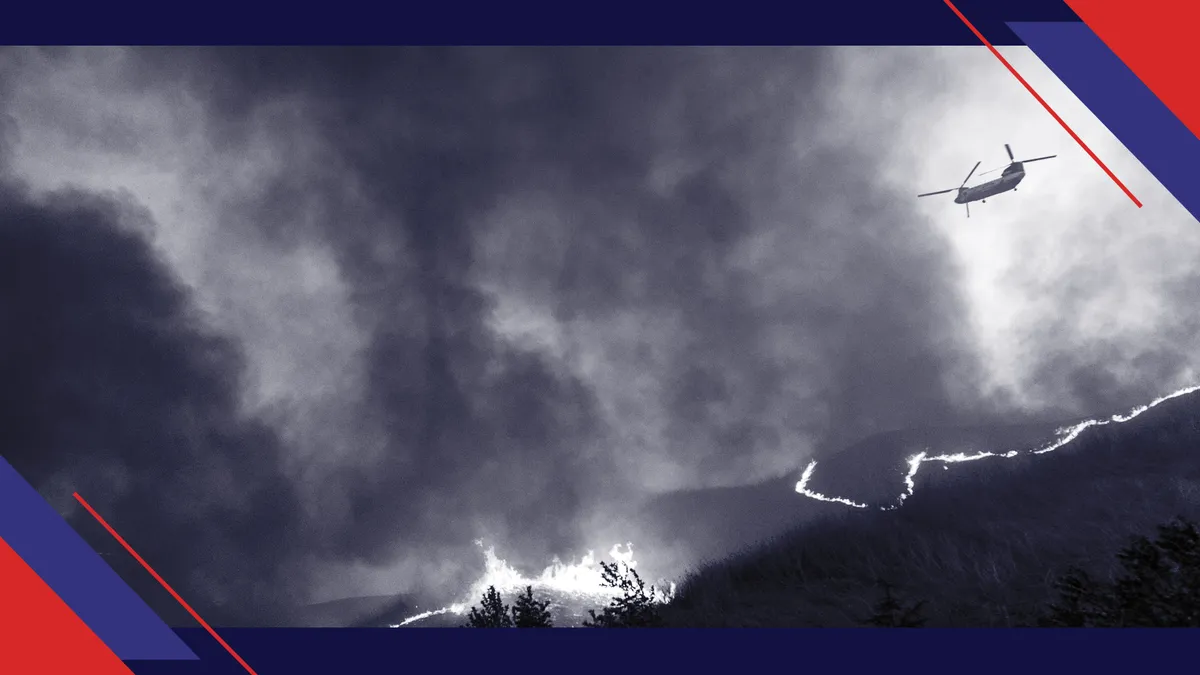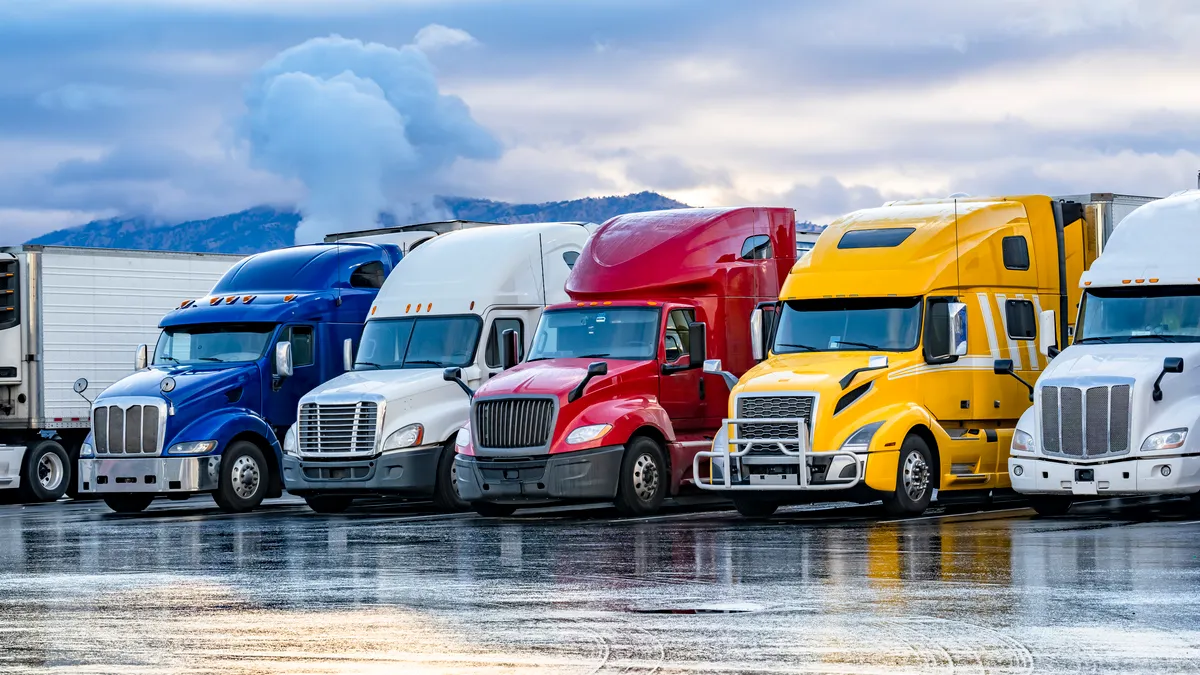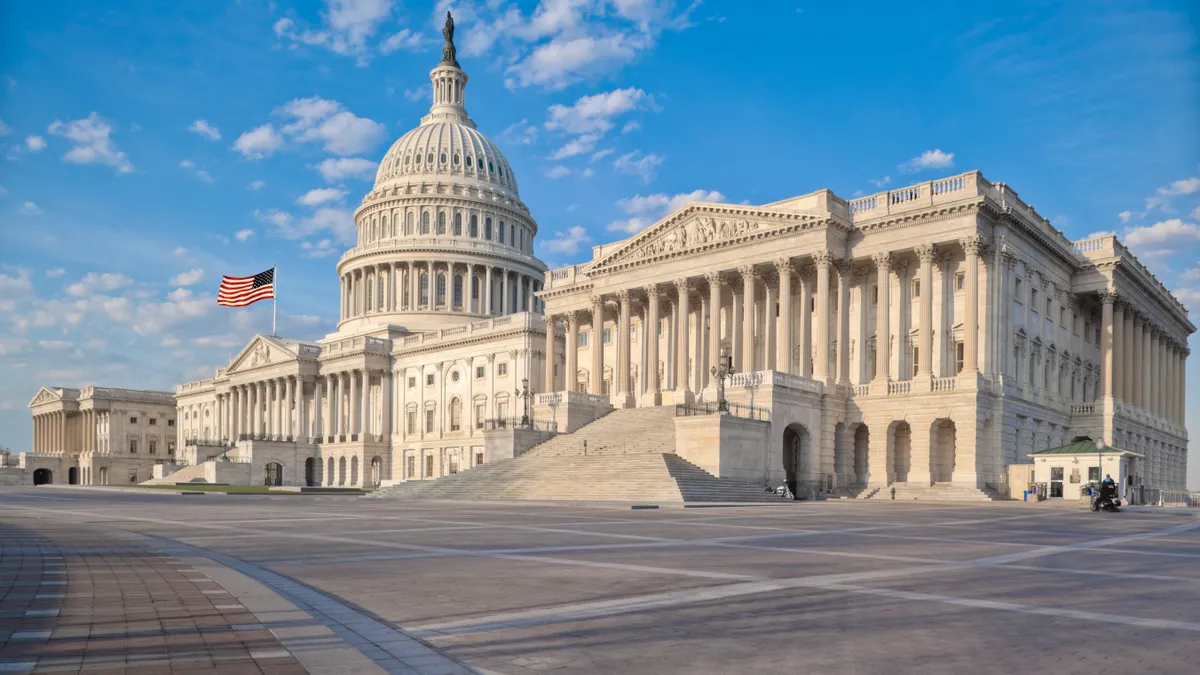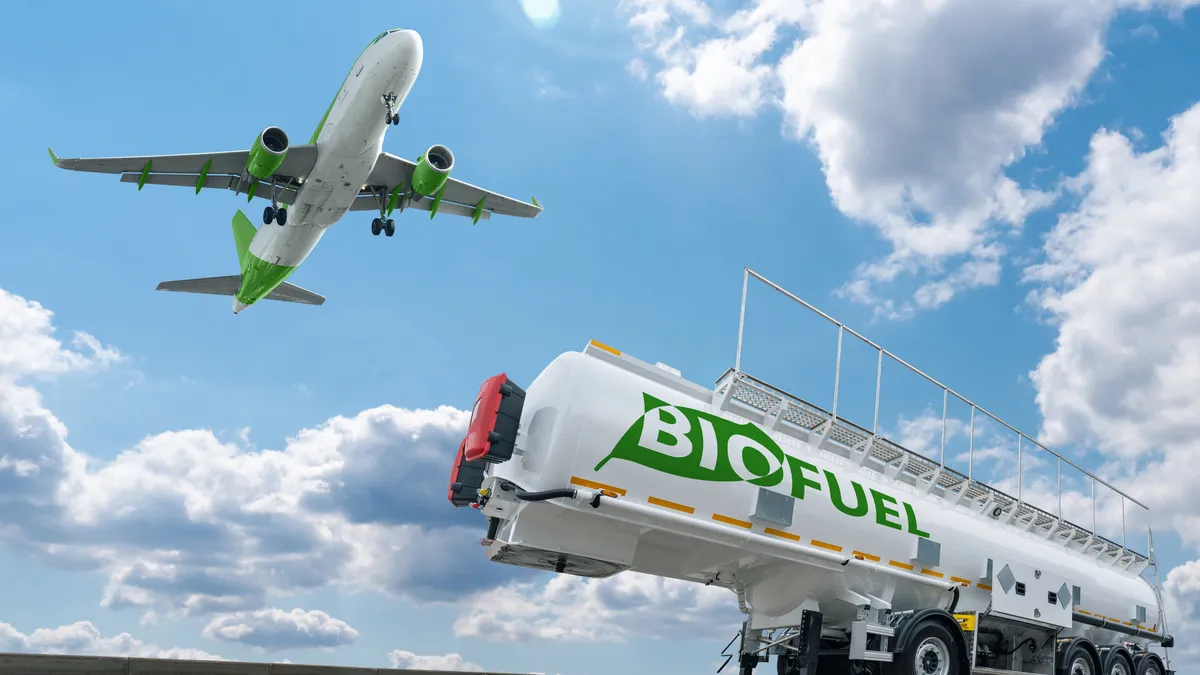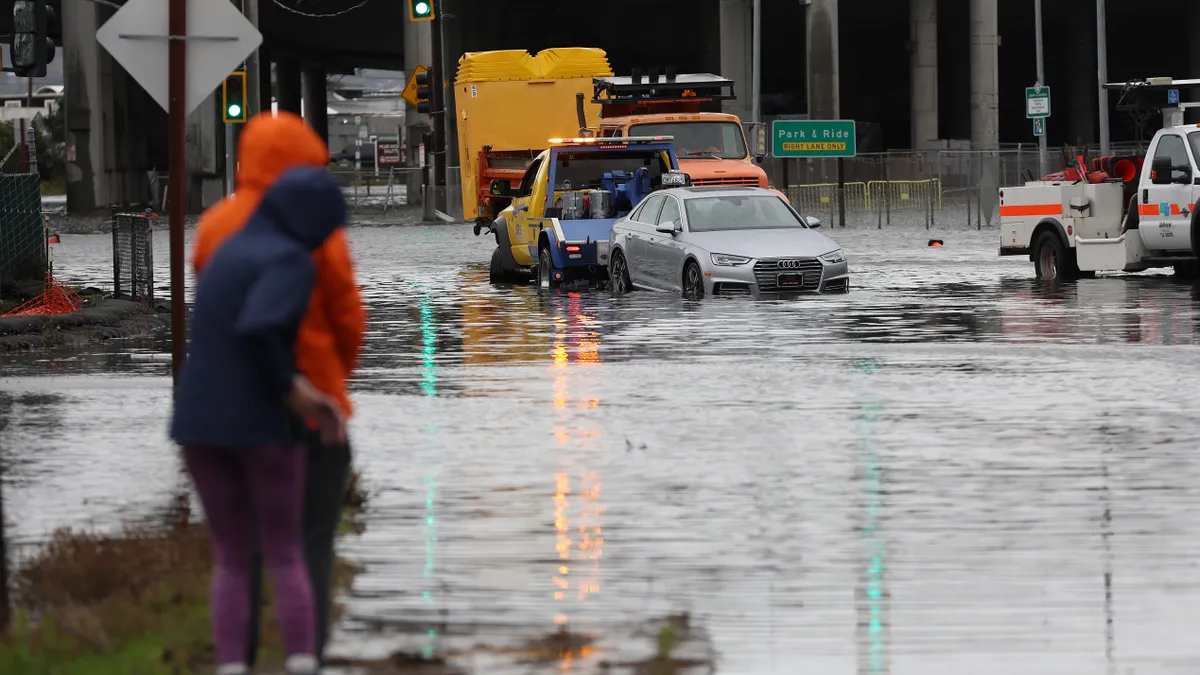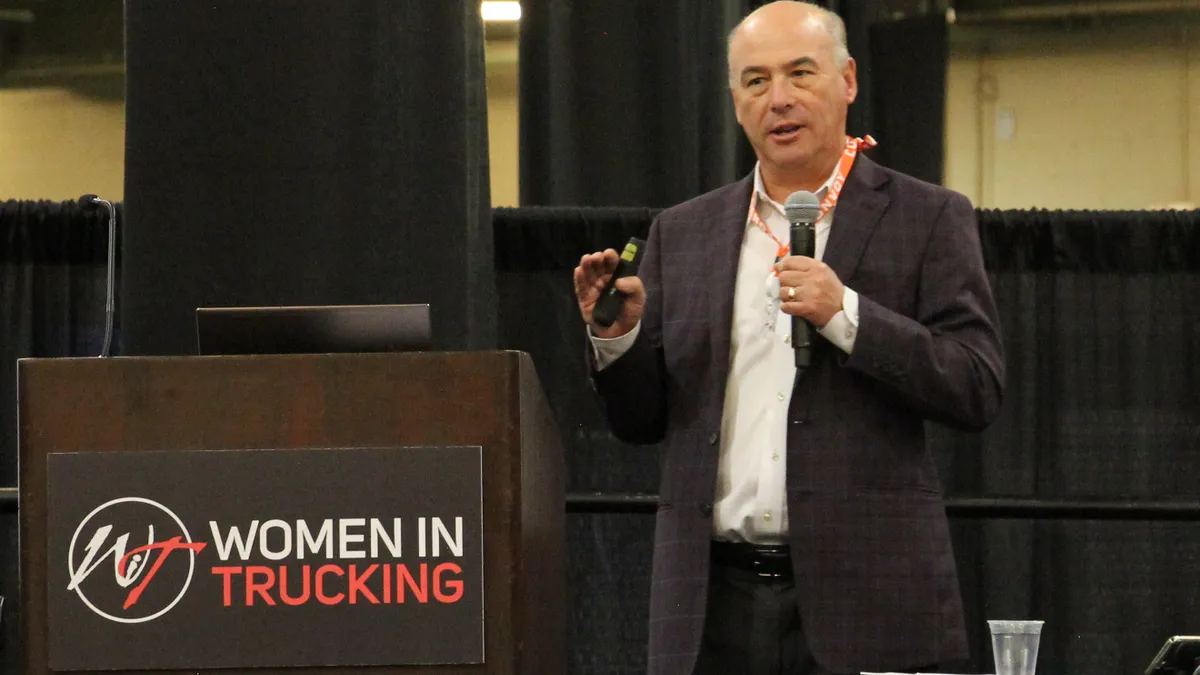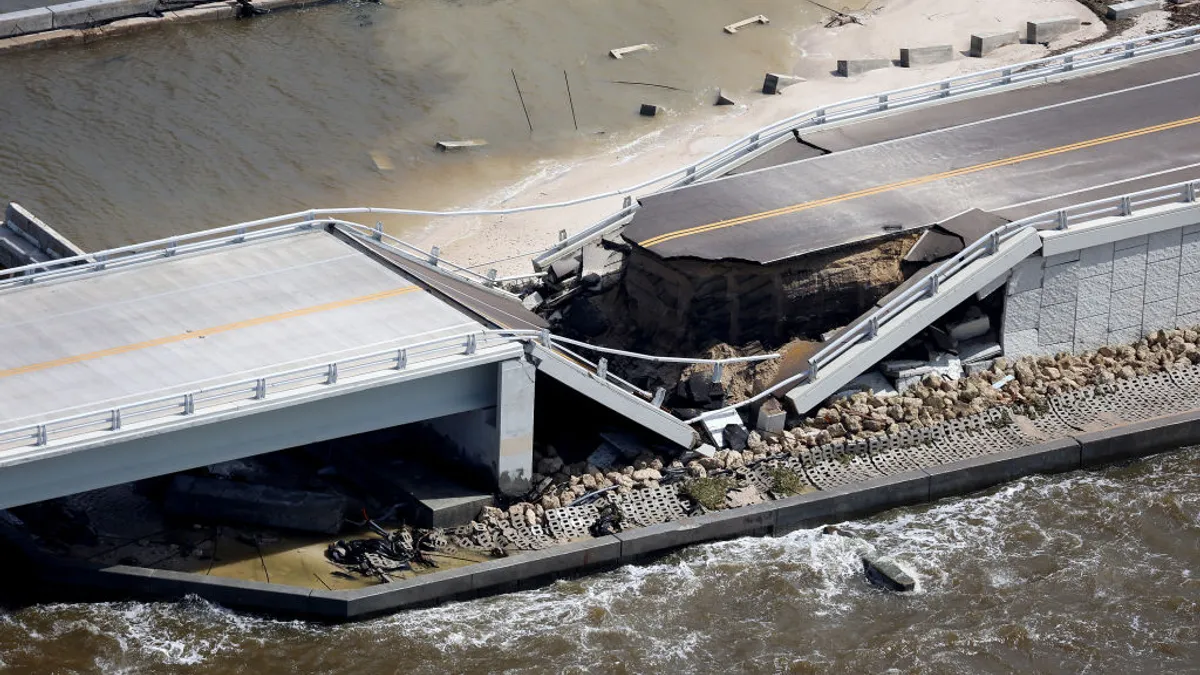This article is part of a series on the impacts climate change and severe weather have on logistics networks. View the entire series here.
In 2020, California lost 4,257,863 acres to fire. That came from 9,917 incidents, and damaged or destroyed 10,488 structures in one year. This year, wildfire season is expected to be worse.
"California has always had fires," but the number of days with favorable fire conditions like high winds and low relative humidity doubled over the past three to four decades, said Jon Davis, chief meteorologist at Everstream Analytics.
Less snowpack and an earlier melt result in longer and more intense dry seasons, with vegetation susceptible to flammability.
That requires logistics managers to anticipate more frequent and severe fires going forward, as the wildfires damage homes and buildings, as well as clog up transportation arteries. The combination makes it difficult for supply chains to operate.
The five-year average number of fires from January to May 9 is 905. But in 2021, California experienced twice that number, with 1,812 fires, and three times the number of acres burned. And it's not even the height of the season. Fire season typically peaks between September to November, and it's getting longer. Cal Fire, part of the California state government, estimates that fire season increased by 75 days, with climate change considered a key driver.
2020 was the most active fire season in recent history
"The wildfire situation becomes an issue because there's a couple of choke points in California," primarily going north out of Southern California, said B.J. Patterson, CEO and co-owner of Pacific Mountain Logistics, based in San Bernardino, California. "The biggest challenge is contingency planning for when those routes are cut off."
I-15, to Las Vegas and Salt Lake City, as well as I-5 go through fire-prone areas. To avoid I-15 when bringing freight to Salt Lake City, drivers may use I-10 to US 95 to Las Vegas before cutting over to I-15, which can easily add a day and half.
"Sometimes they're cut off for a week at a time. When you're in Southern California, a week's worth of freight is more than most areas of the country do in two months," Patterson said. The choke points can affect interstates and trucking movement as well as railroads, he said.
The poor air quality also poses a health burden to workers. "You have to be outside loading and unloading boxes. That puts workers at risk," said Bindiya Vakil, CEO of Resilinc.
Rethinking warehouses and inventory
Fire risk hasn't deterred many logistics managers from expanding their supply chain networks into California. Real estate company CBRE reported that California's Inland Empire, adjacent to Los Angeles, was the top market in demand last year, and the state's Central Valley was one of the top emerging markets nationally.
Over the past few years, warehouses have been built closer to population centers, because of the Amazon effect, said Kathy Fulton, executive director of American Logistics Aid Network. "The things that make us more efficient also make us more fragile," she said.
Distribution centers are located closer to populations which rely on them for local needs. "There's more chances for supply chains to be interrupted, rather than just road challenges," Fulton said.
With wildfire risks, some companies are considering moving warehousing operations or sourcing from vendors outside of potential fire danger areas, said Davis.
But that's not possible in all cases. "Food is perishable," said Vakil. "How do you manage a Safeway distribution center? You can't locate your replenishment supply outside of 1,000 miles. It's hard to get in and out." Some industries have more leeway, she said, like technology or pharmaceuticals, where inventory stored elsewhere can still support operations.
To mitigate a potential impact, said Vakil, companies can periodically move some inventory or add buffer stock outside the region during higher risk periods. That allows them to keep the majority of inventory in the needed location, but ensure some supply availability in case that site is less accessible.
Having enough buffer stock is still a concern for many companies. When the country came out of the recession a decade ago, most retailers were inventory adverse, said Patterson, since they were caught with expensive excess goods.
"I often refer to it as the 2008 syndrome," he said. Supply chains moved to a just-in-time approach to mitigate that risk, resulting in shortages that were apparent during the early months of COVID-19. Low levels of safety stock can be problematic in an event like a wildfire. If the stock is inaccessible or transportation is delayed due to road closures, supply chains can grind to a halt.
Preparing for fire risk with data, drills and insurance
Unlike hurricanes, which come with advanced warning, wildfires, tornadoes and earthquakes do not.
"You're reacting," Vakil said.
Wildfires do have a season, and companies can prepare for the risk by understanding which supplies, suppliers and distribution centers are in riskier areas for wildfires in California or other states.
Even with planning, there can still be periodic disruptions, but it doesn't have to be a massive disruption if the company is planning ahead.
"The last thing you want to do as a risk manager is scramble for resources when you're in a crisis mode."

Shehrina Kamal
Vice President of Intelligence Solutions at Everstream Analytics
Risk management used to be ad hoc, but now companies are using more technological solutions, said Shehrina Kamal, vice president of intelligence solutions at Everstream Analytics.
"The last thing you want to do as a risk manager is scramble for resources when you're in a crisis mode," she said.
Monitoring the fire situation in real time and having all the company data in a central location with easy access helps. That allows a company to understand where its inventory is, how a fire in a particular area would impact them, what revenue is at risk if that inventory is destroyed or unavailable, and to connect other dots between disparate sources of information.
Logistics companies like Patterson's prepare for wildfires and earthquakes with annual drills. The firm has evacuation plans and business continuity plans, outlining how to deal with business issues and communicate with customers during a disruption. The communication tree designates which employees call which customers, and how inventory will be handled.
Pacific Mountain Logistics can move the product if needed to fulfill orders elsewhere. It backs up data to the cloud and is able to work remotely. The company has generators in case the facilities lose power, and emergency food, water and first aid supplies in the event that employees are trapped on-site.
Properties are at risk in several Western states
Property insurance can protect the value of the warehouse or manufacturing site and contents in the case of a wildfire. But business continuity insurance can be expensive.
"The deductibles are very high," said Patterson. That insurance is helpful if a company is directly impacted over the long term, like if the warehouse or factory burned down. "But it has to be a pretty significant impact to make [insurance] worth going after."
Developers look carefully at the area's wildfire risk when building, partly because insurance can be an expensive proposition.
The other type of insurance to consider is contingency business interruption insurance, which only covers physical damage at the named sites, said Vakil. A company that relies on a 3PL or contract manufacturing site should name the site in the policy, in case it experiences damage or destruction from an event like a wildfire.
"It's important to map the supply chain, really all the sites that form that chain, and name all of them in the policy," she said.
Continuous crises and disruption
California wildfires come with other risks too, like proactive rolling blackouts, Vakil said. In 2020, PG&E shut down power because the wildfire risk was too high, and the company may proactively do so again in the future.
While using generators is not ideal, Patterson's facilities have generator back-up in case of power loss.
"We've been subjected to rolling blackouts a few times," he said.
With enough notice, logistics operations can rely more on locations outside of the crisis zone and plan ahead for closures.
5 of the 6 largest California wildfires were in 2020
| Rank | Fire name | Date |
|---|---|---|
| 1 | August Complex | August 2020 |
| 2 | Mendocino Complex | July 2018 |
| 3 | SCU Lightning Complex | August 2020 |
| 4 | Creek Fire | September 2020 |
| 5 | LNU Lightning Complex | August 2020 |
| 6 | North Complex | August 2020 |
| 7 | Thomas | December 2017 |
| 8 | Cedar | October 2003 |
| 9 | Rush | August 2012 |
| 10 | Rim | August 2013 |
Source: Cal Fire
And of course, California wildfires aren't the only crises supply chains need to consider.
"They're having to deal with multiple crises at once, whereas in the past, you're worried about hurricanes in the southeast United States, and that's all your business has to focus on," said Fulton.
Last year, companies had to deal with civil unrest, the pandemic, wildfires and hurricanes, sometimes at the same time.
"There are compound crises and we're seeing more of them, and more frequently," Fulton said. This requires companies to increase the scope of their planning. When trying to get through a crisis, "if we can't even support ourselves, where is the surge support coming from?"
"There are compound crises and we're seeing more of them."

Kathy Fulton
Executive Director of the American Logistics Aid Network
The risks are not going away.
"It's a continuous role of disruption when it comes to the supply chain," Vakil said.
It's not possible to mitigate all concerns, but companies can leverage the information they get, to plan ahead for known seasonal issues like wildfires. That includes understanding which supplies are most critical to the company's revenue, so as to de-risk the supply chain at least in that area.
"That's how you make sure your supply chain doesn't bring you to your knees financially or cause financial distress for your company," Vakil said.


